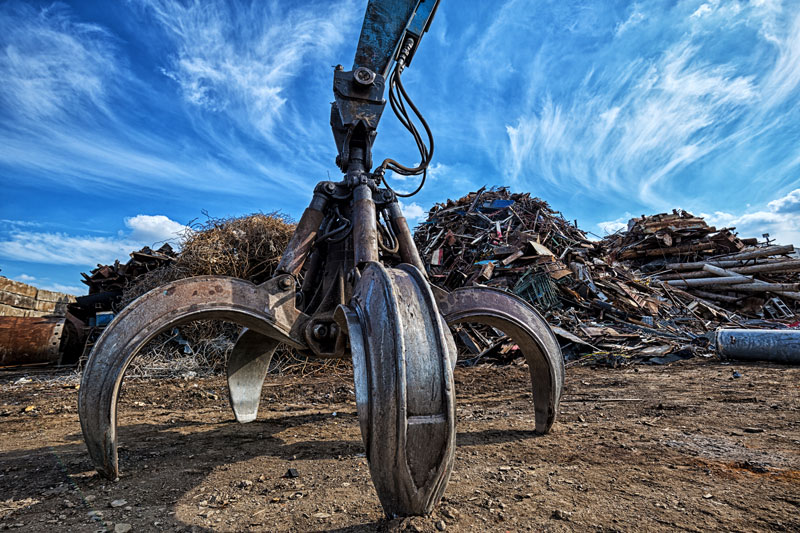What’s going on?
The Environmental Protection Agency (EPA) issued an Enforcement Alert noting that metal recycling facilities may cause excess emissions in the nearby communities. This signals their likely intention to place increased regulatory scrutiny on scrap metal operators.
The EPA’s recent enforcement actions include Clean Air Act (CAA) violations for uncontrolled emissions at facilities that operate shredders.

Currently, over 250 metal recycling facilities in the U.S. operate a shredder. Facility owners and operators must have a thorough understanding of the Clean Air Act (CAA) requirements and how the CAA applies to their facility. This includes the implementation, testing and maintenance of air pollution control systems.
Specifically, shredder operators should understand the quantity of volatile organic compounds (VOCs) and other emissions generated during hammermill operations. Operators should review their current air permits to ensure that their permits include all emission types relevant to their current operations. Operators should also review all other requirements in their permits to verify that they are meeting all agreed upon practices, and standards – and that they have processes for continual evaluation and record keeping to demonstrate this compliance.
Unpermitted facilities should begin and complete the required permit process.

What happens at a metal recycling facility?
- Recyclable materials (including automobiles and white goods) are collected and processed
- Scrap materials are sorted and sold as a commodity
- Shred-able materials are processed into ferrous and non-ferrous metal, and non-metal waste*
- Recovered scrap metals are sold to end users
*Significant amounts of non-metals are contained within shredded material. Removal of non-metals waste is required. Non-metal waste can vaporize and impacts facility air emissions.
VOC Emissions at Metal Recycling Facilities
The EPA and other state regulatory agencies have monitored and collected emissions data from scrap metal recycling facilities for over 15 years. Regulatory bodies have found that VOC emissions from scrap recycling operations trigger non-compliance with the Clean Air Act (CAA) and justify a requirement emission controls.
The processing of shredding metals generates emissions of VOCs, particulates, and hazardous pollutants including lead, zinc, cadmium, and mercury.
Emission rates can be reduced by:
- Shredder constructed or retro-filled with a negative air pressure enclosure
- Shredder has existing controls, like a cyclone or Mill Water Injection System (MWIS) used as a scrubber
- Facility removes contaminants from feedstock prior to shredding (“depolluting”)
- Shredder initiates Acceptance Policy for inbound scrap materials
Preventing Air Pollution
Emissions must be quantified and captured before they can be controlled. Some facilities have permanent enclosures around their shredder in addition to large fans to create a negative pressure environment. With effective work of a control train in place, emissions can be controlled.
The best practice for control air pollution is depolluting the removal or recovery of fluids and other hazardous materials, before shredding.
What’s next?
The EPA recommends several steps to minimize VOC emissions:
- Follow pre-shredding pollution prevention by depolluting scrap materials before processing through your shredder
- Accurately estimate hourly and yearly emissions
- Install add-on pollution controls
Disclaimer
Harrow Environmental’s Blog is intended for educational discussion of Environmental regulatory issues. It contains only general information about regulatory matters. It is not legal advice and should not be treated as such.
Limitation of warranties: The legal information on this website is provided “as is” without any representations or warranties, express or implied. Harrow makes no representations or warranties in relation to the legal information on this website.
Professional assistance: You must not rely on the information on this website as an alternative to professional environmental and legal advice from your environmental expert and attorney. If you have any specific questions about any matter, you should consult an environmental professional and your attorney.
Can you republish this site’s original content?
You can share & adapt the original content on Harrow’s blog ONLY IF you attribute it and do not use it for commercial purposes. If you remix, transform, or build upon the material, you must distribute your contributions under disclosure of same.
